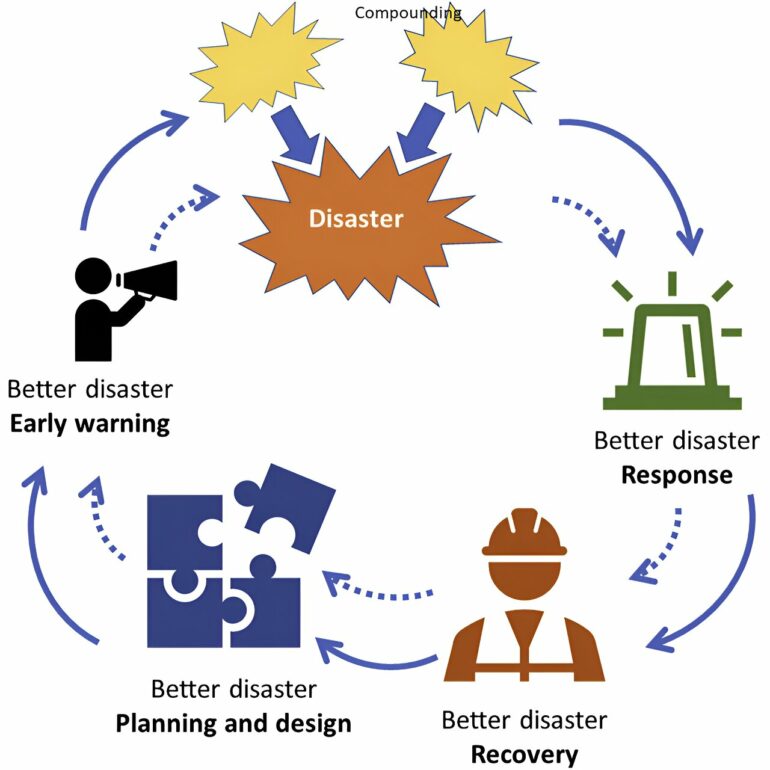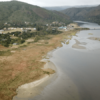Climate change has made extreme weather events more frequent and intense worldwide. Some examples of climate-related disasters in recent years include the serious flooding in Venice, Italy in 2019, the terrible heat waves and wildfires in Australia in 2020, and the widespread flooding in Central Europe in 2021.
Although our understanding of climate extremes and their impacts continues to improve, events that overwhelm the coping capacity of social and environmental systems often take us by surprise. This is partly because current climate and impact modeling efforts are very limited in their ability to model compound events, making it difficult to plan for appropriate ways to adapt.
The COST Action Understanding and modeling compound climate and weather events (DAMOCLES) has succeeded in changing this situation. The Action has raised awareness of the importance of compound events and their impacts across different scientific fields. A recent study based on work from COST Action DAMOCLES has been published in iScience.
It has also created a new community bringing together experts in climate science, climate impact research, hydrology, and statistics. Bart van den Hurk of Deltares Institute, NL, and the vice-Chair of the Action, talks about the successes and challenges of DAMOCLES.
What are compound events?
Many major hydrometeorological disasters are often the result of compound events. These extreme events have a complex structure because they are caused by several factors or have multiple effects. For example, a coastal flood may become extreme due to a combination of a strong storm surge and heavy rainfall in the coastal area. A better understanding of these events can improve early warning, help design more effective defense infrastructure, and provide valuable information about the risks people face.
High-impact compound events come in many forms, such as droughts, heat waves, wildfires, and air pollution, where interactions between temperature, humidity, and precipitation play an important role. In addition, interactions between extreme precipitation, river discharge, and storm surge link coastal storm processes with fluvial/pluvial and ocean dynamics. Clustering of major storm events resulting in spatial and/or temporal dependence, is another example.
A notable example of a compound event occurred in Portugal in October 2017. Wildfires ravaged nearly 200,000 hectares of land in just 24 hours, resulting in 50 deaths. Several compounding factors contributed to this disaster, including long-term vegetation stress, the influence of Hurricane Ophelia, which brought hot and dry air masses to the region, and human negligence related to agricultural practices.
Another example is Russia in 2010, where a lack of rainfall combined with an atmospheric blocking event over western Russia led to an exceptionally hot and dry summer. This, in turn, led to widespread wildfires and air pollution, resulting in over 50,000 deaths, and destroying a quarter of Russia’s crops.
Practical applications of DAMOCLES
When DAMOCLES started, the idea of compound weather and climate events was new and not widely understood. Only a few specialists, mostly coastal hydrologists, had expert knowledge of the underlying principles. DAMOCLES has played a crucial role in creating a framework for defining and managing compound events. It has also focused on showing how this framework can be applied in practice.
Van den Hurk, the vice-Chair of DAMOCLES, shared his personal experience with a client who was faced with a flood caused by a combination of different flooding factors. The client wanted to ensure that their analysis of the event would provide accurate inputs for the associated quantitative risk assessment associated with it. By demonstrating the physical connection between the various drivers, DAMOCLES enabled the client to adjust the risk calculations. This adjustment helped the client make an informed decision to invest in flood infrastructure, albeit a costly investment.
DAMOCLES success and impact
The Action has been very successful in defining and analyzing compound weather and climate events and has created a new category of specialists in this field. It has achieved very high visibility in the research community. DAMOCLES has published highly influential research papers that are expected to shape our thinking about compound events for years to come.
DAMOCLES scientific results are a key reference for studying and assessing compound events and associated risks that pose the most serious challenges to modern society from ongoing climate changes.
Van den Hurk states, “One of the major achievements of DAMOCLES has been the development of a typology for categorizing compound events. This typology helped to structure the extreme diversity of different event types, leading to improved methods for understanding compound events. The original paper presenting the typology, titled ‘A typology of compound weather and climate events’ was published in Nature Reviews Earth & Environment in 2020. It has already been cited more than 400 times according to Google Scholar.
“The typology has been used as a basis for follow-up activities of DAMOCLES, to provide Guidelines for Studying Diverse Types of Compound Weather and Climate Events and to link compound event thinking to the disaster risk reduction cycle (Consideration of compound drivers and impacts in the disaster risk reduction cycle).
“Another excellent outcome has been the inclusion of compound events in The Intergovernmental Panel on Climate Change IPCC. As the preeminent authority on climate change, the IPCC synthesizes the latest knowledge in the field and serves diverse audiences including policy makers, NGOs, scientists, industry, and the general public.
“These scientific findings are, and will continue to be, a key reference for studying and assessing compound events and associated risks that pose the most serious challenges to modern society from ongoing climate changes,” concludes Van den Hurk.
More information:
Bart J.J.M. van den Hurk et al, Consideration of compound drivers and impacts in the disaster risk reduction cycle, iScience (2023). DOI: 10.1016/j.isci.2023.106030
Provided by
European Cooperation in Science and Technology (COST)
Citation:
Understanding compound events in a changing climate (2023, September 22)



